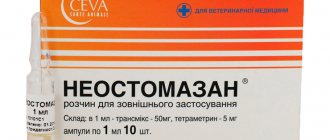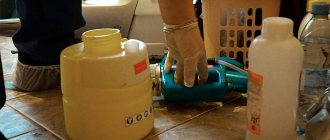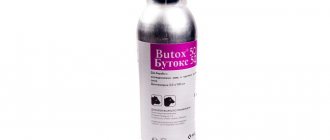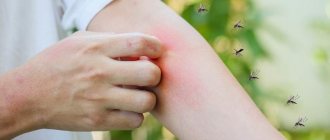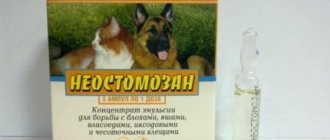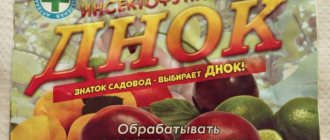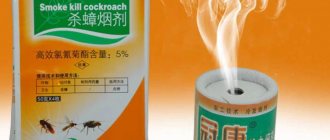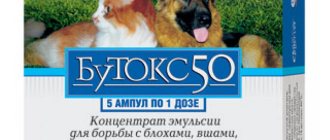Reviews (12)
2
Prepared by: Oksana Ch.
11/21/2018 Cooking time: 1 hour 0 min
| Save | I cooked) | Estimate |
To decorate the New Year's table, I offer you a very tasty appetizer of boiled eggs, decorated in the form of the symbol of the year - the Pig. Bright, original, a little funny - both children and adults will like it!
Description and properties of the drug
Antibacterial drug effective against gram-negative and gram-positive bacteria. A broad-spectrum remedy is used to treat tuberculosis, viral and fungal infections. The medication is used to disinfect equipment and premises for keeping pets from the following pathogens:
- spores of oxygen-free bacteria;
- coccidia oocysts;
- parasite eggs;
- viral agents:
- strains of bacteria.
In concentrated form, the acidic substance causes irritation of the mucous membranes of the nose and nasopharynx. There is a rash, itching and redness. Direct contact with skin leads to ulcers and chemical burns.
If medication vapors get into the eyes, conjunctivitis and increased lacrimation develop. There may be clouding of the cornea and other transparent media of the organ of vision. Due to the negative consequences, iodine monochloride is classified as a compound with a high level of danger.
Analogs
If the substance comes into contact with the skin, a burn is possible. From the action of vapors, conjunctivitis, clouding of the cornea, and severe irritation with catarrh of the upper respiratory tract can develop. During long-term manipulations, it is important to ensure that there are no animals or employees in the room. All containers used during the work are disposed of.
It is permissible to use animal products during and after treatments. All preparations based on iodine monochloride ensure the absence of resistance to the main component in microorganisms. In composition and action, Iodinocol is similar to the drug. "Iodotriethylene glycol." "Cliodesiv". "Dixam." You can use them to disinfect premises.
“Iodine monochloride” is in demand among poultry and livestock farms and breeders. The product is used with aluminum when cleaning large rooms after parrots. Convenient ease of use.
The product is distinguished by its affordable price. Before the first use, it is advisable to consult a veterinarian so as not to harm your pets and yourself.
Indications for use
Iodine monochloride is used in the following cases:
- for external use on the skin of animals suffering from ringworm;
- disinfection of the udder of cows if an infectious or fungal disease is suspected;
- planned or preventive disinfection of premises and equipment in premises for birds, cattle and ornamental animals;
- disinfection of surfaces in refrigerators, eggs and veterinary institutions;
- air treatment in premises for keeping livestock.
Features of preparation of the composition
During coccidiosis, the chicken coop is treated once in the presence of birds with a ten percent liquid heated to seventy degrees. The duration of exposure is five hours. For strongylatosis and strongyloidiasis, the three percent essence is heated to seventy degrees. It should work for an hour.
During respiratory mycoplasmosis in birds and salmonellosis, a three percent solution is used with an exposure of one hour. The eggs are immersed in a four percent composition for a quarter of an hour and then dried in air. After milking, the udder of cows is treated with a 0.5% solution or a ten percent mixture with Triethylene glycol.
When working with metal surfaces, follow the instructions. To prevent the development of corrosion, the surface is treated separately. “Iodine monochloride” is diluted with “Triethylene glycol” in a ratio of one to nine. Use the resulting drug with the recommended treatment with a ten percent composition.
For a five percent ratio, a fifty percent composition is applied to metal surfaces. Iodine and water are taken in equal proportions. For a three percent preparation, thirty percent essence is diluted in a ratio of thirty to seventy.
For respiratory diseases in animals, the procedure is carried out using an aerosol. There are two options. At the first stage, a disinfectant thirty percent aqueous solution is prepared. Using aerosol preparations, ten to twelve sprayings are carried out. The action is repeated for several days.
How to apply it correctly?
To obtain a therapeutic effect against the background of ringworm, the lesions are treated with a 10% solution of iodine monochloride and medications based on triethylene glycol in a similar concentration.
Medicines penetrate well through the stratum corneum of the epithelium due to their oily structure, therefore they are evenly distributed over the entire surface of the affected skin.
Iodine monochloride is applied in a small amount, distributed with a cotton swab, gauze or brush. The solution is thoroughly rubbed into the affected areas and into the skin around them.
For a pathological process of mild to moderate severity, it is enough to carry out 1-2 treatments with a time interval of 30 minutes. In severe cases, when the animal’s skin becomes rough, the procedure is carried out up to 5 times a day for 72 hours.
In such a situation, the drug is thoroughly rubbed with maximum force to ensure the penetration of the active substances into the hair follicles and under the crusts of the horny epithelium.
If ringworm is present, therapy is carried out outdoors or indoors with good ventilation. To carry out disinfection for treating each individual, tampons or gauze are changed, brushes are cleaned, washed with water and disinfected for 10 minutes in a solution of iodine monochloride.
Methods of using the drug vary depending on the purpose of its use.
| Task | Application diagram |
| Disinfecting treatment of cattle udder | Carry out after milking. Use a 0.5 solution of the drug or a 10% triethylene glycol-based product. The disinfectant is applied using an aerosol or glasses. |
| Sanitation of premises from pathogenic microorganisms | Irrigation of room surfaces and technical equipment by spraying using a sprayer. |
| Disinfection as a preventive measure at livestock facilities |
|
| Routine disinfection of animal premises | Smooth and uneven surfaces are treated with 3 and 5% of the drug, respectively. It is left for 3-6 hours. Up to 500 ml of the drug is consumed per 1 m2. |
| anthrax | The medicine is left on the work surfaces for 3 hours. Treatment is carried out with 10% disinfectant. 500 ml of solution is required per 1 m2. |
| Refrigerated rooms or low room temperatures | Spraying is carried out in 3 approaches. For an area of 1 m2, 300-400 ml of the drug is needed. Before each spraying, the surfaces are treated with water at temperatures up to +70°C and 20% saline solution. 500 ml of liquid is consumed per 1 m2. |
| Pig erysipelas, atrophic rhinitis of a bacterial nature, viral inflammation of the liver in ducks, foot and mouth disease in cattle | The disinfectant is left for 3 hours. Treatment is carried out using a 5% solution of the drug, consumed per 1 m2 of 500 ml. The final treatment when cows are affected by foot and mouth disease is carried out at the same flow rate 2 times with an interval of 60 minutes. |
| African swine fever | Treat with a 3% bactericidal solution. 500 ml of solution is required per 1 m2. Apply once and leave for 3 hours. |
| Bradzot in sheep, tuberculosis, enterohepatitis | A 10% iodine solution is heated to +50°C. Disinfection is carried out 2 times with an interval of 60 minutes. 500 ml of the drug is used per 1 m2. Leave for 6 hours. |
| Paracaridosis | |
| Respiratory mycoplasmosis of chickens, geese, turkeys and ducks, salmonellosis | Treat with 3% preparation. 1000 ml of product is used per 1 m2. Leave for 60 minutes. |
| Parascariasis, ascariasis of pigs and horses | Apply 5% of the drug, which is preheated to +70°C. 1 liter of medicine is consumed per 1 m2. Leave the drug for 5 hours. |
| Coccidiosis | Use a solution of iodine monochloride in 10% concentration. Leave for 5 hours. 1 liter of product is used per 1 m2. |
| Strongyloidiasis | Treatment is carried out with a 3% solution of the drug, heated to +70°C. Leave for an hour at a consumption rate of 1 liter per 1 m2. |
Premises treatment
For prevention, the following types of surfaces can be treated with the drug:
- tile;
- metal;
- painted and whitewashed walls;
- smooth surfaces.
Use a three percent solution for work. The duration of the procedure is three hours. Surfaces made of cement, brick, porous and rough, unpainted, wooden, channels for removing manure and litter are treated with a five percent composition for three hours.
Preventive treatment of refrigeration chambers against the appearance of mold fungi is carried out with ten percent liquid for an hour. It is permissible to carry out processing in the presence of animals and birds. When infectious diseases are detected in them, they act taking into account several features. Smooth surfaces are irrigated with a three percent solution, rough surfaces with a five percent solution. The duration of the manipulation is from three to six hours.
At negative temperatures in the room, the procedure is carried out using a fractional method in three steps. Water is used at a hot temperature of seventy degrees. It is allowed to replace pure liquid with a 15-20% composition of table salt. Apply the drug for three hours.
There are several recommendations for dealing with dangerous infectious diseases.
- For current treatment of infectious atrophic rhinitis, swine erysipelas, viral foot-and-mouth disease, and duck hepatitis, a five percent solution is used. They also carry out finishing treatment twice. An hour interval is required between manipulations. After repeating, the exposure is three hours.
- Actions for swine fever are carried out once with a three percent essence for three hours. During parascariasis of horses and ascariasis of pigs, they work with a five percent solution of iodine monochloride, heated to seventy degrees. Exposure – one hour.
- For infectious enterotoximia and bradsitis in sheep, avian and animal tuberculosis, a ten percent solution heated to fifty degrees is used. Treatment twice with an hour interval and a six-hour exposure.
Safety regulations
When working with a highly hazardous substance, you must follow safety precautions:
- Aerosol spraying and wet processing of livestock is carried out wearing protective equipment. Overalls, rubber gloves, tight-fitting goggles and boots are a must. Do not leave the skin exposed.
- The concentration of bactericidal vapors in the air is allowed not to exceed 5 mg/m3.
- The premises are processed in the absence of animals and children.
- Be sure to protect your respiratory system: with a gas mask or respirator.
- During treatment, it is prohibited to eat, smoke or drink alcoholic beverages.
- The containers used to contain the drug are immediately disposed of.
general information
The drug is a light yellow liquid, fuming in air, with a pungent acidic odor. The solution contains 3% iodine monochloride and 30% hydrochloric acid. The drug is packaged in bottles and canisters with volumes ranging from 0.1 to 50 kg.
The cost of a 3 liter canister in June 2022 was 995 rubles.
Bacteria and fungi do not develop immunity to iodine. The drug is used as an external antimycotic agent and a room disinfectant by aerosol spraying. During thermal sublimation, gaseous iodine is formed, which sanitizes the respiratory organs of birds with respiratory infectious diseases. The drug is a highly hazardous substance and requires professional training of operators. Enters into chemical interaction with metals. To reduce corrosive activity, one part of iodine monochloride is diluted with 9 parts of triethylene glycol. Sanitation of organs d.
